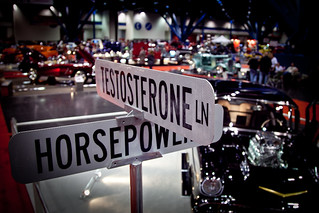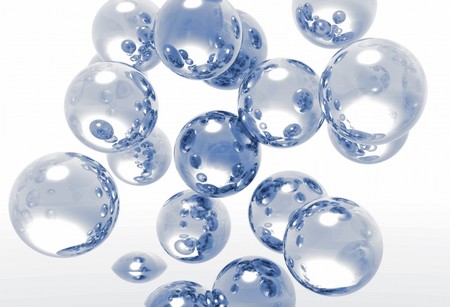Do women truly need to supplement testosterone levels?
 Testosterone is a hot topic for men. But evidently, it’s an equal opportunity hormone, designed to boost low libido one woman, one cream application at a time. But what is it about testosterone that makes its use in menopausal women questionable if downright unhealthy?
Testosterone is a hot topic for men. But evidently, it’s an equal opportunity hormone, designed to boost low libido one woman, one cream application at a time. But what is it about testosterone that makes its use in menopausal women questionable if downright unhealthy?
The levels, that’s what.
I’ve written about testosterone before and you can look up the archives via this link. The upshot is that for both men and women, testosterone therapy is oversold as a panacea for just about everything from distress about aging to sexual desire to bone, heart and mental health. Wow! Quite the Fountain, no?!
However, while transdermal (through the skin) testosterone is preferable (it avoids metabolism by the liver and promotes steady blood levels of the hormone), the patch has gotten the boot both in this country and overseas, and implants are no longer available. LibiGel, a topical cream was also denied market entry by the FDA. The result has been frequent prescribing of compounded testosterone in both genders.
Mind you, Allopathic practitioners for the most part shun compounded products, claiming safety issues and the lack of regulation. And in some cases, they are absolutely correct (do you recall the New England compounding crisis?). More recently, the North American Menopause Society (NAMS) issued a press release knocking compounded prescriptions, noting that they may deliver excess levels of testosterone thereby “producing untoward effects.” For example, too much testosterone may lead to depression, promote unwanted acne and hair growth, enlarge the clitoris, deepen the voice, produce aggression and boost cholesterol levels. The answer? According to NAMS, the answer may lie in an Australian formulation — AndroFeme — that was recently tested in seven healthy, postmenopausal women.
In a study published ahead of print in the journal Menopause, the researchers report that this 1% testosterone cream, applied 5 mg daily for 21 days and then immediately thereafter, 10 mg daily for 21 days, resulted in peak blood levels of testosterone that were in the normal range; while the 5 mg dose raised blood levels only slightly above normal, the 10 mg dose raised it to a higher level (double the upper limit). Moreover, apparently neither dose level had an impact on estrogen levels or sex-hormone binding globulin, a protein that binds to the sex hormones and determines how much of them remain available.
So, what’s the lowdown? Theoretically, the Australians have arrived at an acceptable testosterone dose for women with a safe delivery system. They report that it was well tolerated but did not qualify what this means. If you read the NAMS press release, the organization is basically promoting a pharmaceutical grade product over compounded agents even though the study was conducted in a mere seven women. Seven women do not a conclusion make…ever.
How much testosterone is too much for women after menopause? As of today, any amount might be too much until more data are available. Buyer, beware. T is for thwart and the time to put low T to bedis now.
Read MoreGuyside: Getting testy about testosterone
 There’s no doubt that men think about the effects of aging on their bodies. And if there were, a viewing of ads for hair colouring, hair thickening agents, or erectile dysfunction drugs would quickly convince you. You could be a new man!
There’s no doubt that men think about the effects of aging on their bodies. And if there were, a viewing of ads for hair colouring, hair thickening agents, or erectile dysfunction drugs would quickly convince you. You could be a new man!
And as regular Flashfree readers will know, one of the things that’s been touted as a solution to the woes of the aging male is testosterone replacement therapy.
The basic idea is that men may have a condition that’s referred to as “Low T.” And so a gel, a patch, a tablet or an injection may bring you back to a more energetic, athletic, virile condition. The pitch has been made more and more convincingly, by all accounts: an Australian research team found that the sales of testsosterone treatments went from $150 million in 2001 to $1.8 billion in 2012.
That’s a 1200% increase. The Australian research indicated that the amount of testosterone being prescribed far outstripped the incidence of “male menopause” or andropause. So what’s going on? Oh, I suspect there’s a generous helping of vanity involved here.
But if it were simply a matter of making men feel better about themselves, it would just be a waste of money. A growing body of research evidence is suggesting that treating Low T may increase the risk of cardiac events. The most recent, an article from the open-access journal PLOS ONE, suggests a substantial increase in the risk of myocardial infarction — what we normally refer to as a heart attack — with the use of testosterone, for men under and over 65 years of age.
I’m sure there are men with diagnostic criteria that would make testosterone therapy an appropriate choice, with a careful calculation of the risks and benefits. But if my hair’s getting a little thin, if I’m not feeling as “macho” as I once was — do I really want to be using a hormone supplement that could put me at risk of a heart attack?
It’s very easy to succumb to marketing-based pitches that appeal to what we think we need as men. But it’s important for us to not jump at those pitches without thinking about the risks and the benefits carefully.
There was a rush to use estrogen and progesterone to help women with symptoms of menopause several years ago, and then a panic when those therapies were associated with increased cardiac symptoms.
I’m no doctor, and I’m certainly not saying that nobody should be using hormones in this way. But I do think that we should think through ALL of our medical decisions and ensure we’re taking the risks seriously.
(photo: CC-licenced image by Flickr user Ed Schipul)
Read MoreWednesday Bubble: Depressed? It may be high testosterone
As I’ve written previously, depression and hormonal imbalance go hand in hand as much as love and marriage, babies and carriages, and yin and yang. As many as 40% of women are affected by depression during menopause, but there are other factors that come into play, including gender (women are 1.5 to 3 times likelier than men to report a lifetime history of depression), stress, family life, general health issues, a lack of exercise and genetics. Moreover, research has shown that how women perceive the effect of menopause and its symptoms on their physical health can significantly affect whether or not they develop depression at the start of the ‘pause.
I’ve got one more factor to add to the mix: testosterone. Findings reported at this week’s International Federation of Fertility Societies/American Society for Reproductive Medicine meeting suggest that when it comes to depression in menopause, high testosterone levels may be at-play, at least in Caucasian women.
Among 400 women studied over 14 years (who were 35 to 47 when the study began), 76% had a history of depression. Still, researchers say that this history did not appear to affect the relationship between high testosterone levels and depression scores; in fact, Caucasian women with the highest testosterone levels were 27% more likely to have depression than women who had the lowest levels. In fact, when considered in totality, each jump to the next measure of testosterone levels (four in all) increased the risk of depression by 14%.
Importantly, the researchers did not see the same increase in depression among African-American women. Rather, African-American women with the highest testosterone levels were 26% less like to have depression.
There is no indication of the reasons why testosterone affects mood in Caucasian versus African-American women. However, it’s important that we have another piece of the puzzle. Take note: if testosterone patches ever make it to market in the U.S., women with preexisting depression may want to step back before hopping on that bandwagon.
Read MoreWednesday Bubble: Will LibiGel liberate testosterone for women?
 Female sexual disorder, also known as hypoactive sexual desire disorder (HSDD, i.e. lack of sexual desire) is big business and the race for the gold ring continues. While the FDA effectively put a halt to the antidepressant flibanseran only months ago, testosterone therapy continues to drive the march towards finding a cure for a low libido. The question remains, however, is this a good or bad strategy? And how about risks and benefits of adjunctive testosterone? Is it safe?
Female sexual disorder, also known as hypoactive sexual desire disorder (HSDD, i.e. lack of sexual desire) is big business and the race for the gold ring continues. While the FDA effectively put a halt to the antidepressant flibanseran only months ago, testosterone therapy continues to drive the march towards finding a cure for a low libido. The question remains, however, is this a good or bad strategy? And how about risks and benefits of adjunctive testosterone? Is it safe?
HSDD is a disorder that robs a woman of her libido and sexual desire. It is believed to affect up to 36% of women between the ages of 20 and 70, although slightly higher numbers of women with some degree of lowered sexual desire have been reported. Especially affected are women who have had their ovaries removed and have entered menopause as a result; these women in particular, have low testosterone levels. Notably, however, not all women who experience diminished sexual desire have low testosterone levels and the cause of HSDD is unknown. In addition to physical causes, relationship and interpersonal/psychological issues are also believed to play a role, making the condition even more difficult to treat. And while testosterone may be helpful for boosting libido, it has also been linked to side effects that include acne, excessive hair loss or growth, hoarseness, weight gain, insomnia, voice deepening and migraines. More importantly, use of testosterone has also been shown to increase cholesterol levels in some women, thereby raising the risk for heart disease.
According to research, the HSDD market ranges from $2 to $5 billion. Even more troubling is the fact that in 2009 alone, physicians wrote more than 4 million prescriptions for testosterone to treat HSDD even though it’s not approved as a therapeutic strategy.
LibiGel® is a topical testosterone gel that is applied to the upper arm. Thus far, it has been shown in short-term, 3 month clinical trials, to significantly increase the number of “sexually satisfying” events by as much as 238% without serious side effects. Since these early trials, the company has been studying over 2,000 postmenopausal women over the age of 50 with an elevated risk for heart disease to observe how well the gel does over the long-term (i.e. 3 years). Thus far, the manufacturer BioSante reports that the rates of reported cardiovascular events and breast cancer are very low and plans to present interim data later this week at this year’s North American Menopause Society Meeting.
Is LibiGel going to liberate sexually dysfunctional women? And what about the other factors that affect desire, such as relationship status, self-esteem, stress and anxiety? Should we be concerned that physicians already prescribe testosterone ‘off-label’ for millions of women and that the company actually reports that over 90% of women using testosterone unapproved for this use would switch to LibiGel once it’s approved?
I am not quite sure if this is an example of irresponsible medicine or an untapped need. I would like to believe that LibiGel might be effective for certain women who have been forced into menopause due to physical conditions. On the other hand, doesn’t the medical treatment of HSDD ignore the obvious: that there are behavioral, social and environmental factors at play that testosterone therapy won’t and can’t address?
What do you think? Is this a bubble to be burst or the “re-desire” revolution? Only time will tell.
Read MoreWednesday Bubble: Testosterone and the metabolic syndrome

Today’s Bubble features a pretty interesting research finding: contrary to what experts have previously believed about the relationship between estrogen and the metabolic syndome evidence continues to accrue that testosterone may ultimately be identified as the culprit. I wrote about this in an earlier post and there are some interesting stats about risk, etc. (You may recall that metabolic syndrome describes the cluster of heart disease risk factors that include overweight, high blood pressure and blood sugar levels, high blood fats levels and low HDL-cholesterol.)
In the current study, published in the early online edition of the Menopause Journal, researchers evaluated 257 cases of metabolic syndrome found in a group of 1862 women enrolled in the Study of Women’s Health Across the Nation.
They found that the ratio of testosterone to estrogen during the menopausal transition, rather than changes in each individual hormone, was an important factor in determining which who would develop the metabolic syndrome. What’s more, faster increases in this ratio over time also increased risk.
What this brings to mind is the question of whether or not it is wise to use testosterone to improve sexual dysfunction during menopause? I’m going to be addressing this in a future post.
Read More






